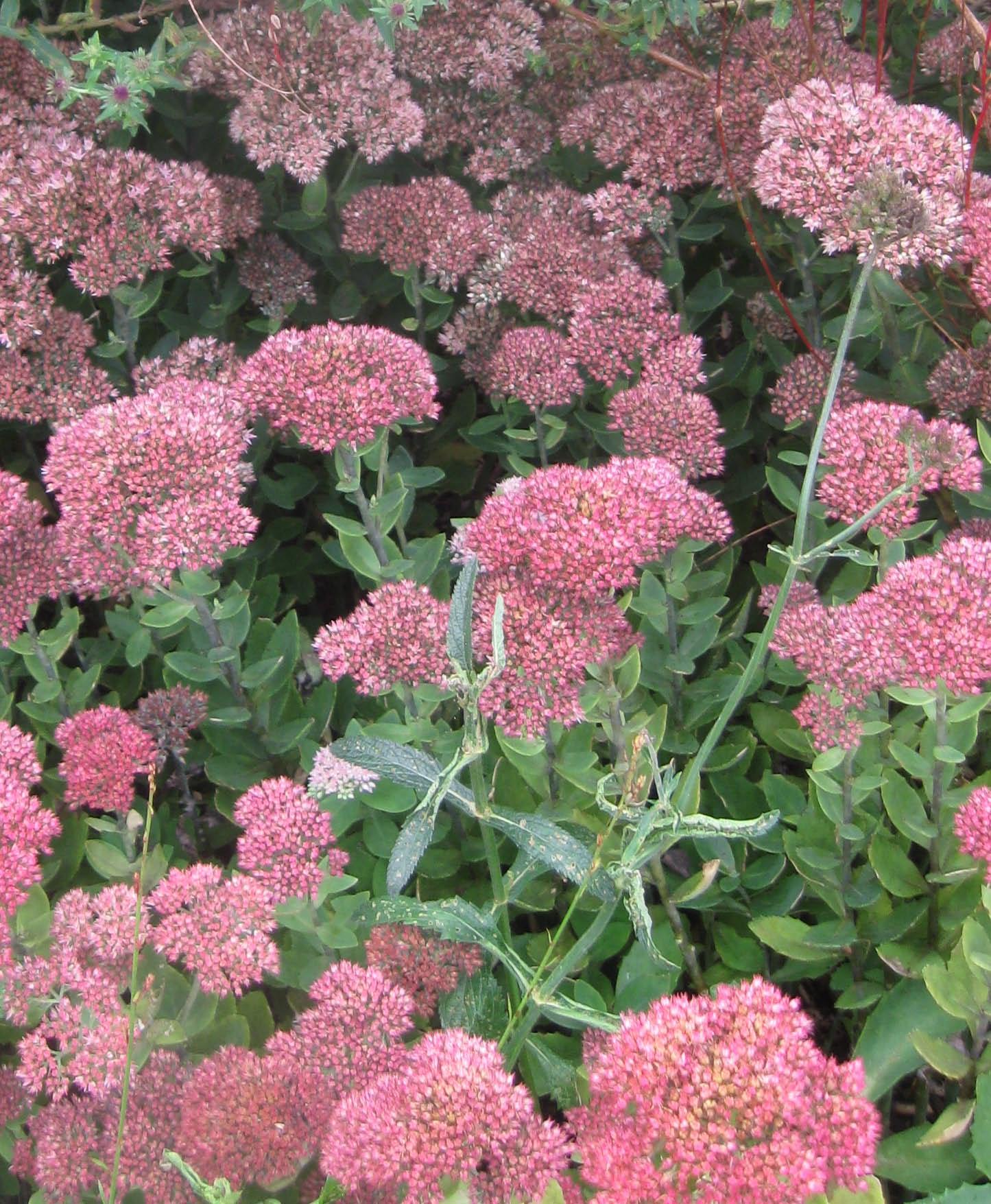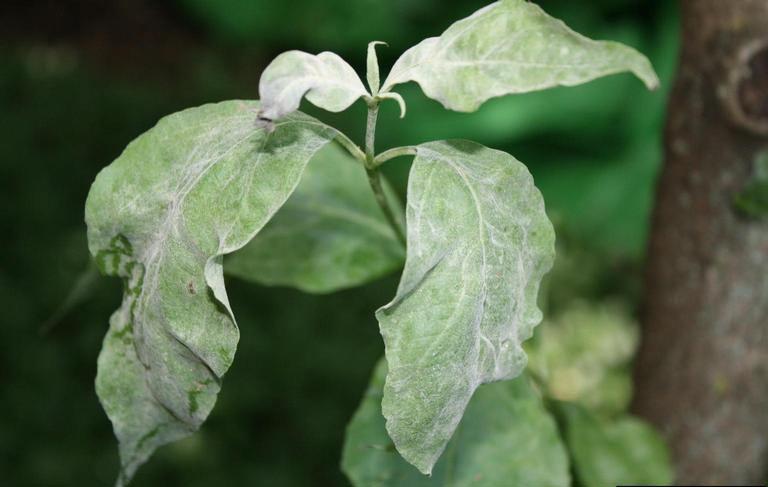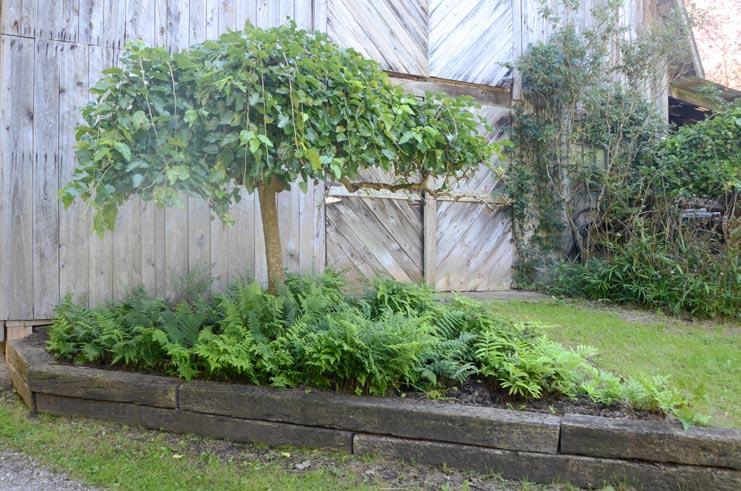KNOWitall
Ask the Expert By Debra Ricigliano
Droopy Dogwood Tree
Q: My white dogwood tree has not looked good at all this year. It bloomed okay in the spring, but then the leaves got droopy with a whitish coating and some leaves had small dark spots on them. I have space to plant another dogwood in my backyard and was wondering if I should select another kind. A: In general, dogwoods did not have a great season. Many became infected with powdery mildew. From your description, that sounds like one of the issues your tree experienced. Powdery mildew can infect dogwoods early in the season and persist throughout the fall. This has become a serious issue for dogwoods. Not only does it disfigure the leaves, but it can potentially weaken the tree. A few leaf spot diseases, like spot anthracnose (not the same as dogwood anthracnose, which devastated dogwoods in the past), septoria, and phyllosticta also plague dogwood trees and are worse in wet years. But they do not typically cause serious problems. Dogwoods are still a favorite tree of many, despite their problems. When selecting a new tree, make sure it is one of the disease-resistant cultivars. Some resistant to powdery mildew are Appalachian Joy’, ‘Jean’s Appalachian Snow’, and ‘Karen’s Appalachian Blush’. ‘Cherokee Brave’ is resistant to both powdery mildew and spot anthracnose. For a complete list, search the HGIC website under “dogwood.”
Cicadas Coming
Q: Earlier in the spring, I was reading a news article about the cicadas coming this year. I kept waiting to no avail. Have we been spared from the onslaught of noisy, clumsy insects that fly into people and other objects as they travel around from tree to tree? If they are going to come again, should I be worried about my trees? A: Believe it or not, there are folks who find periodical cicadas fascinating and are amazed at how they spend 17 years underground and emerge in large numbers to overwhelm predators
Powdery mildew on flowering dogwood. Photo: John Hartman, University of Kentucky, Bugwood.org
ensuring their chances of reproduction and survival. But, to many, cicadas can be an annoyance. Earlier this year, southwestern Virginia, southern West Virginia, and northern North Carolina experienced an emergence of periodical cicadas with a few stragglers that appeared further north, causing confusion about when periodical cicadas are to emerge here. Brood X, which emerged last in 2004 up and down the East Coast, is set to emerge sometime in May of 2021. Periodical cicadas do not feed on trees, but females make slits in small twigs and branches to lay their eggs. Some tip dieback can occur, but is not a problem for older, mature trees. Newly planted deciduous ornamental trees, some shrubs, and young fruit trees can be protected by covering them with mesh with less than halfinch openings (sold in garden supply centers). You also can use tulle, found in fabric stores. Secure the netting around the base or trunk of the plants. Protection should be removed as soon as the adult cicada activity has ended.
to put my garden to bed for the winter? A: Good for you that you used your extra time in a positive way! Vegetable gardening can be challenging. Weather, diseases, pests, and wildlife can be discouraging, but there is nothing better than eating a fresh, homegrown tomato. The fall is a good time to look ahead to next spring to give you a headstart on next year’s garden. When you are done harvesting, remove and clear out all of the plant debris. This reduces overwintering pests and diseases. Take the opportunity to test your soil to get baseline information about soil pH, nutrients, organic matter, and lead. Soil amendments like compost can be added now or in the spring. Uncomposted manure should be spread and worked into the soil this fall to reduce food safety risks. Lastly, cover the bare soil. Shredded leaves or mulch protects the soil from eroding and reduces winter weeds. Planting a cover crop is something else to consider. Maybe next year, you can look into growing cool-season crops like spinach, arugula, broccoli, and garlic. o
Vegetable Garden Prep
Debra Ricigliano is a Certified Professional Horticulturist, who has worked as a horticulture consultant for the University of Maryland Extension Home and Garden Information Center since 1997. She is a graduate of the Institute of Applied Agriculture at UMCP. To ask a gardening or pest question, go to http://extension.umd. edu/hgic and click on “Get Help.” Digital photos can be attached.
Q: After many years of wanting to start a vegetable garden, I took advantage of my extra time at home to build some raised beds and plant a garden. I had many successes and some disappointments, since my squash plants were devastated by squash vine borer. But I decided that I am going to try again next year. What should I do in the fall
SEPTEMBER 2020
WASHINGTON GARDENER
21





